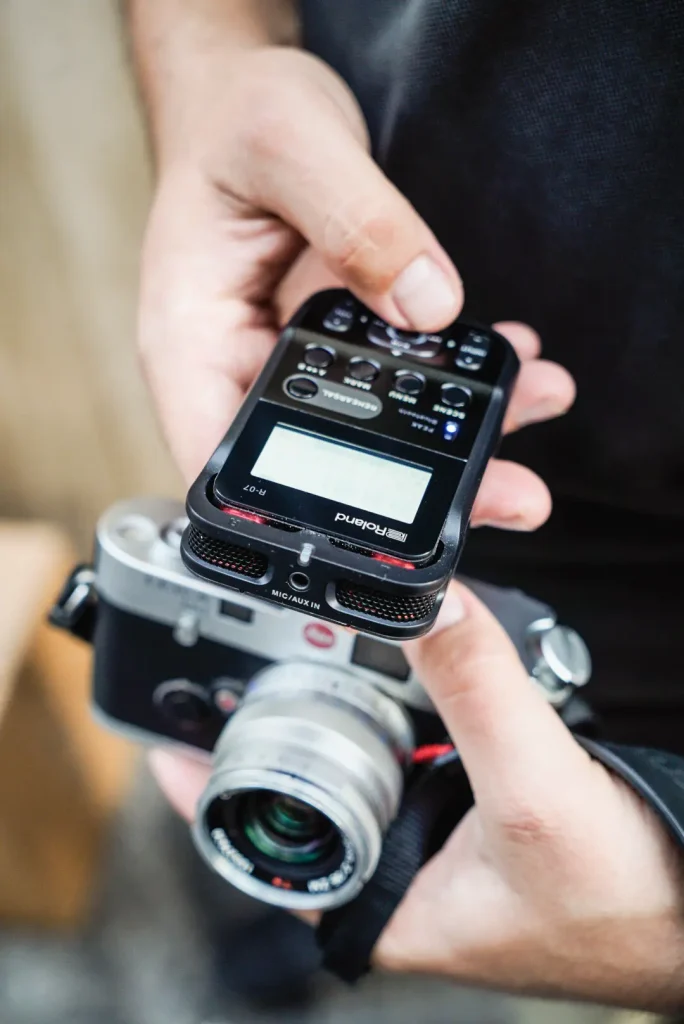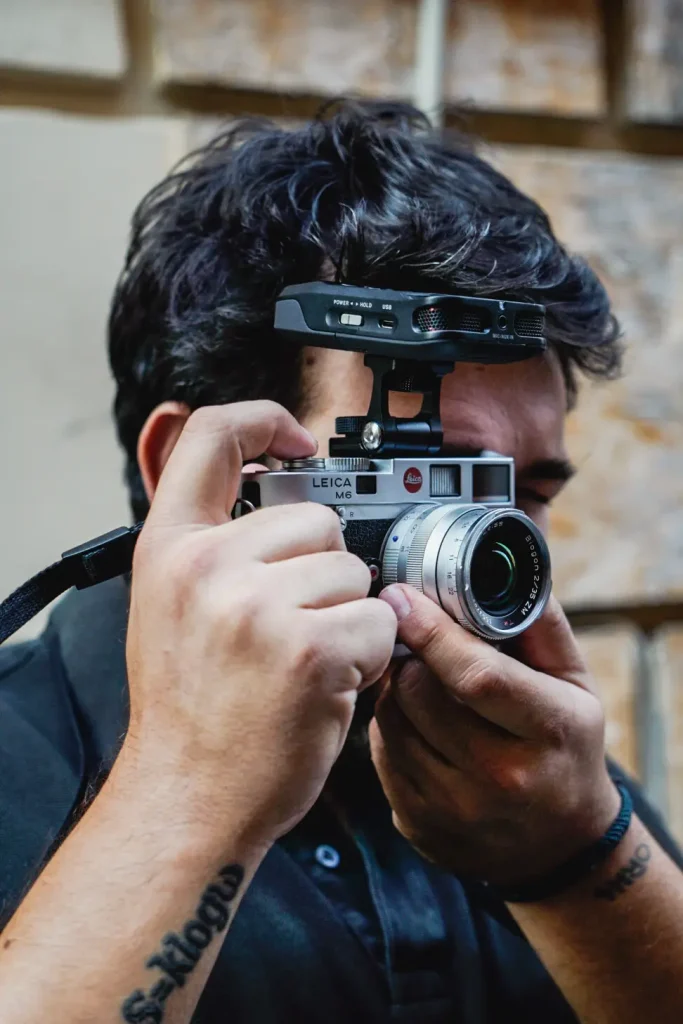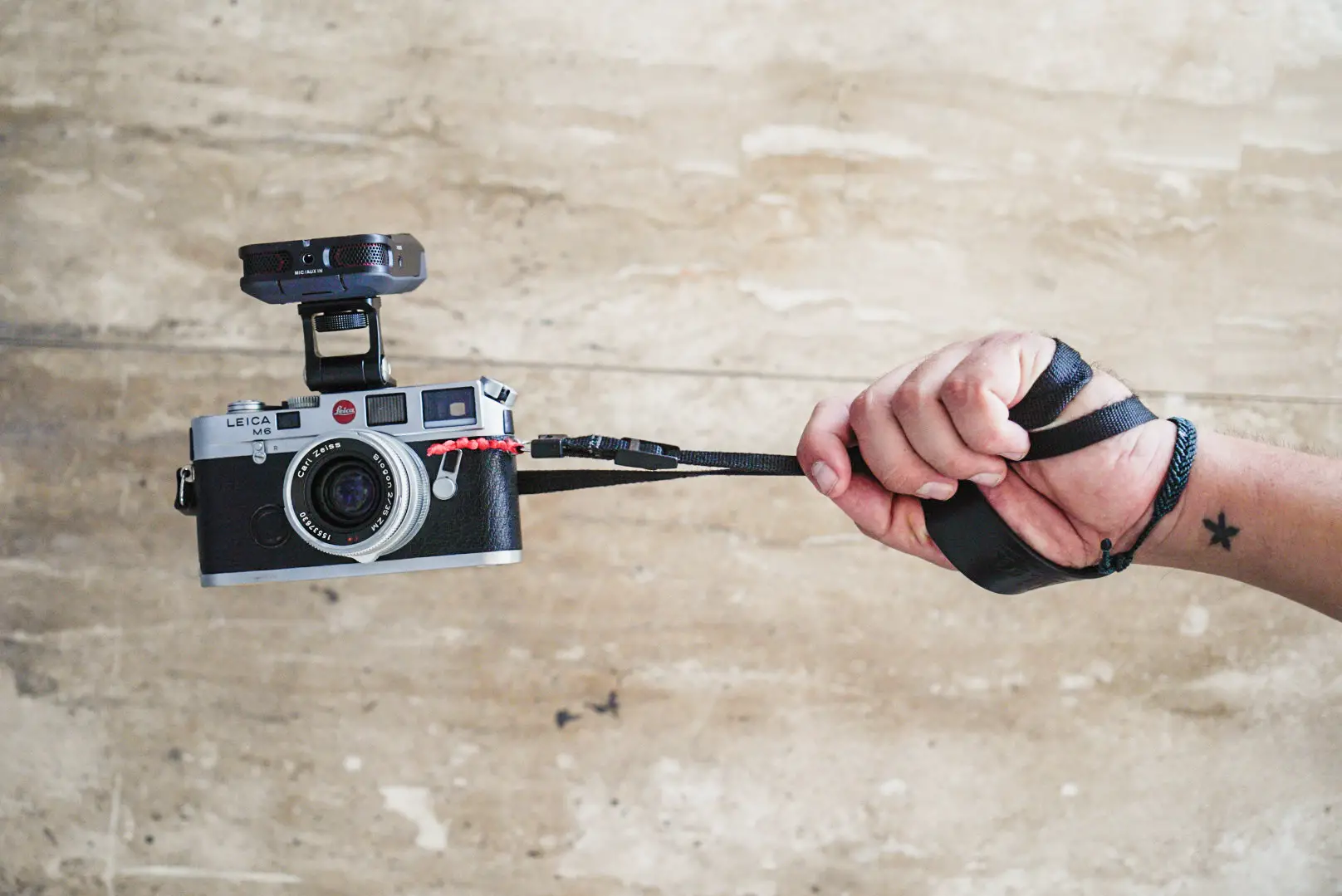The universe is wavering. I’ve always thought that light has a lot in common with sound and the key elements are waves. I’ve always been fascinated by waves. If you stop for a moment and think about that, it is a pretty common pattern of the world we live in. The oceans, the skies, even the historical cycles follow the waves pattern. Light Sounds Light is basically a way to take this thinking to a next, practical, experimental level through one of the things I really can’t live without: photography.
First steps
First of all hi, I’m Mario Cipriano, an Italian photographer and copywriter. My motto is Observe. Absorb. Abstract. I’m currently working on three photographic projects and the one I’d like to talk to you today is Light Sounds Light. The concept formed in my mind when I was participating to a Magnum Photos workshop with Jim Goldberg and Alessandra Sanguinetti in London, where I lived at that time, in 2015.
In that moment something like a little sparkling dot formed into my mind and I just kept feeding it time and space. Years later I was living in Turin, Italy and had fed enough that little sparkling dot to make it become something more serious. I shot three whole roll with my hybrid camera and uploaded them on my Vimeo channel. This was the first:
Then after sharing the link on Reddit something special happened. Webzines around the world started to talk about my project and it was truly a new, amazing emotion to discover for me. In 2019 I introduced Light Sounds Light at MACRO – Museum of Contemporary Arts of Rome and the never used before kind of medium that I call PCV (Prompted Compared Vision).
The hybrid camera
For the first version of the hybrid camera I just plugged an upside-down Sony PX 240 to my Leica M6 with some yellow adhesive tape in a very cobbled together way. To get a better sound, for the second version of the hybrid camera I plugged a Røde VideoMicro mono directional microphone to the Sony PX 240, got rid of the tape and aligned it with the camera body for a better ergonomics.
In 2020 I noticed that the audio module could still be upgraded so I plugged a Roland R07 digital recorder with high quality stereo ambient microphones directly to the hot shoe of the Leica m6. Thanks to this upgrade I can monitor the sound via wireless earbuds, I can control the sound recorder via app on my smartphone. With two tools in one and a small and sturdy adapter I can be faster and more discreet while shooting.

How Light Sounds Light work
When I wander around with my hybrid camera hanging from my neck and spot a potential shooting opportunity I push the rec button on the Roland and start recording. Then I take the time to manual adjust the settings on the M6 camera, compose, frame. After taking the picture I let the Roland record a spare 10 seconds for safety. When the roll is over I process it in my darkroom, then download the audio files while waiting for the film to dry. I scan the film roll and make a selection of the best shots. Each shot has its audio file. I then move to a video editor, import the picture and its audio file and start the editing. Five seconds of black screen and audio, then you hear the shutter triggering sound and in the same moment the picture appears, audio still flowing for five more seconds.

Prompted Compared Vision – PCV
What I export from the video editor is a kind of media content that I’d not define video or picture, I’d rather call it something suspended between the two. With this kind of content I aim to create a moment in which subjective and objective visions coexist in your mind. Let me break it down. In the first five seconds when you only see a black screen your view is disabled so your mind uses the only other thing available, the sound, to create a subjective vision based on said sound. This vision has barely the time to properly form that you hear the shutter sound triggering and the objective picture appears, creating a unique moment in which your objective vision and subjective one meet for a very brief moment, creating a special kind of feeling. I called this Prompted Compared Vision.
Learning to hear
If you are a photographer, a street one in particular, you may know that particular sensation of trance and bliss that you feel when roaming around with the camera hanging from your neck as a heavy necklace or swinging from your hand. Eyes suddenly become more performing, mind focused on potential pictures that form and dissolve in seconds. A sort of Matrix reality but for photographers. A precious gift that I got from Light Sounds Light is that now I work out my ears as well.

During the years I have trained my sight by watching good movies, taking my camera with me even when it had no film roll inside, leafing through as many photo books I could afford, visiting photo exhibition and museums in general. I trained my sight for years but for this project it was like I just had unlocked hearing. Many times I spotted a perfect picture to take but the sound was not that good so I just had to let it go. This was an incredible new sensation to experience.
Another fun side about shooting this project is that sound is much more difficult to frame out of the picture and playing with this concept is incredible. You can shoot a girl eating a sandwich on a bench at the park with the sound of a trumpet from a guy playing on the other side of the street. That guy will never know that in some way, he will be in your picture too even if you framed it totally out of it.
About the future
When I think about the future of Light Sounds Light I think about an exhibition. The problem of how to transport this kind of content into an object of the real word to create a proper show had challenged me since the first moments. But I love challenges and try after try I’ve came to a good solution that preserves exactly all the principles of this project in a physical form. What I know for sure is that I want to bring Light Sounds Light abroad in Europe and USA for now, both for shooting and for exhibitions opportunities or simply making new interesting friends. I’m currently working on two other projects. One is Frameless Frames, a series I started shooting for 10 years ago and I don’t think I’ll stop anytime soon. This is about the power of context and its absence in everyday life scenes. The other one is Fake Flowers in Bloom, a personal photo diary about Covid-19 pandemic impact in Italy.
Keep in touch
Feel free to contact me anywhere you prefer to talk about anything, I’ll be very glad to chat with you.
This is my Vimeo account, where I’ll keep uploading by film roll. This is the Instagram Account for Light Sounds Light where I upload by single sound-photo. This is my Instagram account, where I mainly upload photos for the other two projects. This is my personal Facebook account.
Share this post:









Comments
Jeff on Using an Hybrid Camera to let Subjective & Objective Visions Coexist – By Mario Cipriano
Comment posted: 24/10/2020
Comment posted: 24/10/2020
Louis Sousa on Using an Hybrid Camera to let Subjective & Objective Visions Coexist – By Mario Cipriano
Comment posted: 24/10/2020
Comment posted: 24/10/2020
Eric on Using an Hybrid Camera to let Subjective & Objective Visions Coexist – By Mario Cipriano
Comment posted: 24/10/2020
Comment posted: 24/10/2020
Huss on Using an Hybrid Camera to let Subjective & Objective Visions Coexist – By Mario Cipriano
Comment posted: 24/10/2020
Comment posted: 24/10/2020
Scott Gitlin on Using an Hybrid Camera to let Subjective & Objective Visions Coexist – By Mario Cipriano
Comment posted: 24/10/2020
Comment posted: 24/10/2020
David Hume on Using an Hybrid Camera to let Subjective & Objective Visions Coexist – By Mario Cipriano
Comment posted: 25/10/2020
Comment posted: 25/10/2020
Solo on Using an Hybrid Camera to let Subjective & Objective Visions Coexist – By Mario Cipriano
Comment posted: 25/10/2020
Comment posted: 25/10/2020
Ben Garcia on Using an Hybrid Camera to let Subjective & Objective Visions Coexist – By Mario Cipriano
Comment posted: 26/10/2020
Comment posted: 26/10/2020